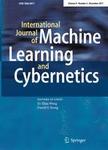版权所有:内蒙古大学图书馆 技术提供:维普资讯• 智图
内蒙古自治区呼和浩特市赛罕区大学西街235号 邮编: 010021

作者机构:Northeastern Univ Shenyang Liaoning Peoples R China Neusoft Med Syst Ltd Shenyang Liaoning Peoples R China Neusoft Corp Shenyang Liaoning Peoples R China Shenyang Med Coll Cent Hosp Shenyang Liaoning Peoples R China Shenzhen Technol Univ Shenzhen Peoples R China
出 版 物:《INTERNATIONAL JOURNAL OF MACHINE LEARNING AND CYBERNETICS》 (国际机器学习与控制论杂志)
年 卷 期:2020年第11卷第10期
页 面:2221-2235页
核心收录:
学科分类:12[管理学] 1201[管理学-管理科学与工程(可授管理学、工学学位)] 08[工学] 0812[工学-计算机科学与技术(可授工学、理学学位)]
基 金:Project of National Key R&D Program of China [2018YFC1311900] National Key Technology R&D Program of the Ministry of Science and Technology [2017YFC0114200]
主 题:Random forest Lobes segmentation Random walk Semi-automated segmentation Machine learning
摘 要:The computational detection of lung lobes from computed tomography images is a challenging segmentation problem with important respiratory healthcare applications, including emphysema, chronic bronchitis, and asthma. This paper proposes a progressive random forest-based random walk approach for interactive semi-automated pulmonary lobes segmentation. First, our model performs automated segmentation of the lung lobes in a progressive random forest network, eliminating the need for prior segmentation of lungs, vessels, or airways. Then, an interactive lobes segmentation approach based on random walk mechanism is designed for improving auto-segmentation accuracy. Furthermore, we annotate a new dataset which contains 93 scans (57 men, 36 women;age range: 40-90 years) from the Central Hospital Affiliated with Shenyang Medical College (CHASMC). We evaluate the model on our annotated dataset, LIDC (https://*** ***) and LOLA11 (http://***/) datasets. The proposed model achieved a Dice score of 0.906 +/- 0.106 for LIDC, 0.898 +/- 0.113 for LOLA11, and 0.921 +/- 0.101 for our dataset. Experimental results show the accuracy of the proposed approach, which consistently improves performance across different datasets by a maximum of 8.2% as compared to baselines model.